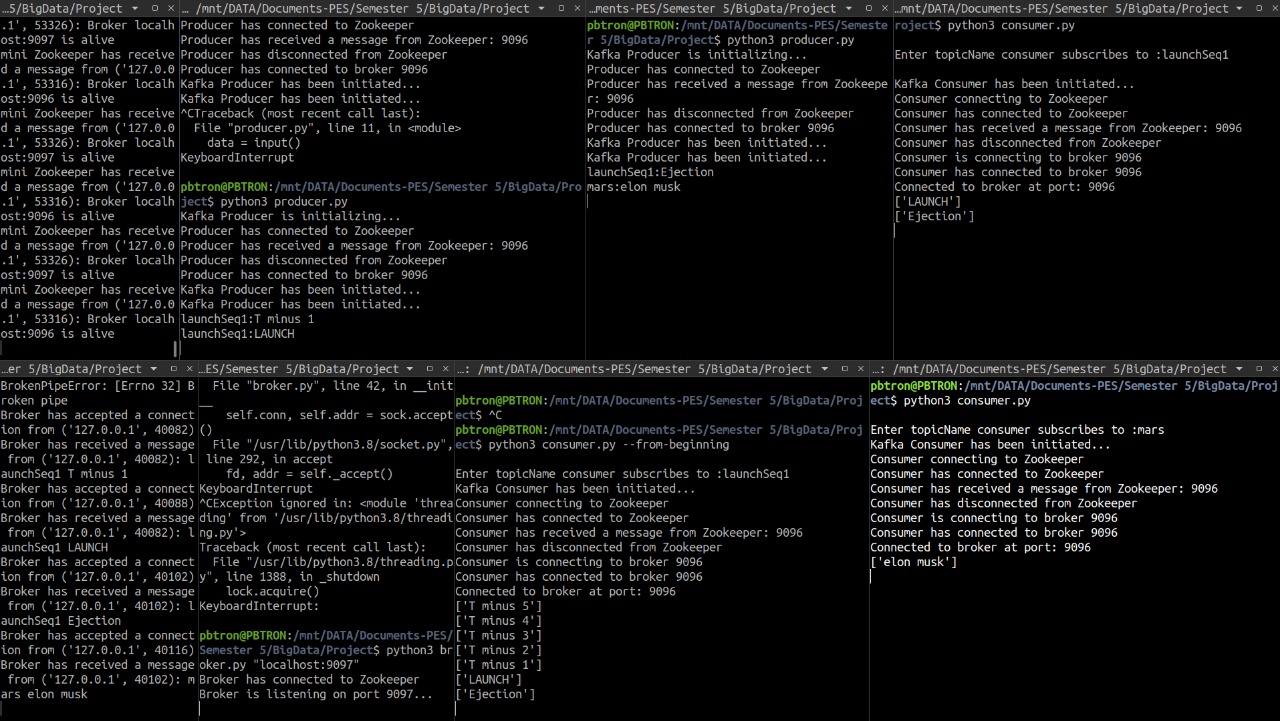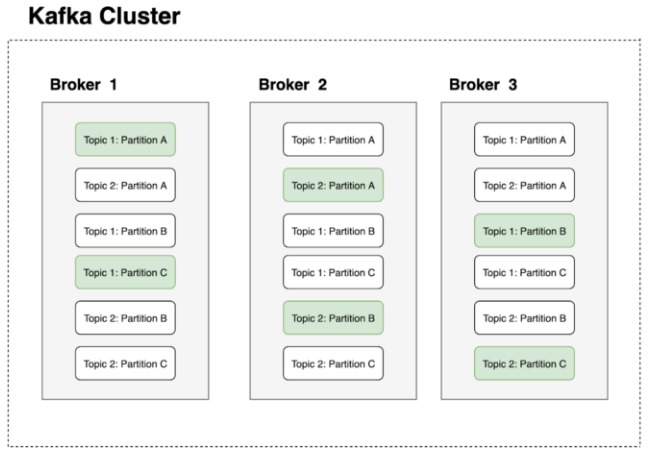This project is the final component of the course UE20CS322: Big Data.
- Prateek Rao: PES1UG20CS303
- Rahul Ramesh: PES1UG20CS319
- Pooshpal Baheti: PES1UG20CS283
- Pratham Bhat: PES1UG20CS305
Apache Kafka is a distributed publish-subscribe messaging system and a robust queue that can handle a high volume of data and enables you to pass messages from one end-point to another. Kafka is suitable for both offline and online message consumption. Kafka messages are persisted on the disk and replicated within the cluster to prevent data loss. Kafka is built on top of the ZooKeeper synchronization service. It integrates very well with Apache Storm and Spark for real-time streaming data analysis.
In this venture, we set out to replicate the most important and basic functionality of Apache Kafka.
Our implementation consists of:
The Mini Zookeeper is the component that monitors the functioning of all the other subsequent components such as producers, consumers and brokers.
- When a broker connects to the Mini Zookeeper, it creates a new thread exclusively to listen to the heartbeats of the broker, which is implemented to be sent at intervals of 0.5 seconds. If the MiniZookeeper does not receive the hearbeat within a second, the MiniZookeeper simply pops the dead broker from the list of alive brokers.
- The new broker is selected using the First-Come-First-Serve (FCFS) algorithm where, in case of a broker death, the next broker in the list of alive brokers gets elected to manage the publisher-subscriber model.
- In this implementation, we have made use of file partitioning to implement the model. A replica of the file that is created for a particular topic is saved in a directory with reference to the port number of the current active broker. A replica of this file is also stored in subdirectories with reference to the port numbers of other brokers.
- In case the broker fails, a consumer can reconnect to the new elected leader broker, where there is already a replica of the file, and it can simply proceed to receive messages for the subscribed topic.
- An implementation of Kafka broker technology.
- 3 Kafka Brokers are set up.
- One Kafka broker is set as the leader, with the other two as followers.
- Broker selection is done using FCFS algorithm.
- The broker maintains and creates the topics.
- They are also responsible for registering/de-registering any Producers and Consumers.
- The leader maintains a log of all operations, which is replicated on the followers.
- In case a publish or a consume operation is encountered when the Leader has died, the remaining Kafka Brokers are able to handle this situation.
- Dynamic number of producers.
- The Producer is be able to register to any Kafka Topic and notifies the Broker to create one if necessary.
- The producer is capable of publishing messages to any Kafka topic.
- Acknowledgement is sent from the Broker once message is transmitted - if not, the message is retransmitted.
- The Consumer is able to receiving messages from a Kafka Topic.
- Dynamic number of producers.
- A consumer is able to receive all the messages from the time of creation of a Kafka Topic by using the
--from-beginningflag.- When the flag is used, consumer obtains all the messages since the creation of the topic.
- If the flag isn't used, consumer obtains messages only sent after subscription to the topic.
The image describes the final working prototype of our project.


